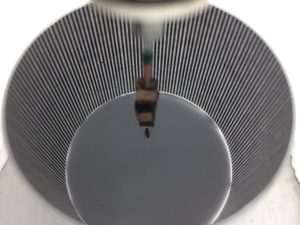About me
I am a PhD student at the University of Sheffield, researching the limits of insect vision and how visual information is processed in the insect brain to produce appropriate behavioural responses. I completed my BSc (Hons) in Animal behaviour and Welfare at Plymouth University, researching the viability for bachelor captive gorilla groups in zoos as a conservation effort. This developed my passion for social behaviour, leading me to undertake research into social insects. I received my Master’s degree in Animal Behaviour from the University of Exeter, I investigated the learning flights of bumblebees, thesis titled, ‘Reward quality influences forager investment for spatial information in bumblebees (Bombus terrestris)’ under the supervision of Dr Natalie Hempel de Ibarra. My main research interests are visual behaviour and navigation, one area of research I wanted to be able to combine with this was sensory neuroscience. I wanted to better understand the link between visual input and behavioural output, thereby gaining an understanding of the neural correlates of specific behaviours. I therefore undertook my PhD research with Professor Mikko Juusola at the University of Sheffield, researching the ‘Neural bases of insect visual information processing and locomotion control’.
My project
Despite their relatively small size, insects constantly process vast amounts of visual information from the environment to guide appropriate behaviours. Their eyes, together with the brain, are responsible for linking visu

al input with behavioural output. Understanding this connection, is a defining goal of neuroscience. However, our current understanding of the neural correlates of specific behaviour is limited, as suitable techniques were not developed until relatively recently. Yet, we know the capacity for eyes and brains to code information as neural activity patterns is fundamental to the ecological success of insects. More so, it is suggested that the early neural images employ adaptive synaptic processing for the perception of behaviourally-significant features.
This thesis aims to expand our knowledge on the early stages of information processing and visually guided behaviour in insects, specifically, the western honeybee (Apis mellifera) and the fruit fly (Drosophila melanogaster). Through a combination of behavioural paradigms, optics and electrophysiology techniques, I will determine how colour, contrast, motion and depth information is represented and distributed in the insect retina and lamina. During my PhD study, I plan to undertake multiple behavioural paradigms that measure visual acuity in bees and flies; before comparing and analysing these results against intracellular recordings from the photoreceptors and visual interneurons of behaving animals. In conjunction with simultaneous measures of behaviour and neurobiology, I will utilise mathematical models for comparison.
At present, I have used closed-loop paradigms in a flight simulator system. This is to investigate how independent head-movements during flight affect visual acuity of the fly eye and visually guided behaviours. Preliminary results suggest that flying Drosophila perform fixation behaviour on a hyperacute dot (<1.2°) within a 360° scene of black and white vertical stripes, irrespective of contrast and colour of the dot. This demonstrates the possession of hyperacute vision in Drosophila, unaffected by head restriction. In addition, Drosophila may thus utilise head movements for further refinement of the visual feedback, as unrestricted head movement evokes increased fixation behaviour. These initial findings support recent evidence that insect visual acuity is far more advanced than classical theory formerly estimated.
Building upon my initial experiments, I will next utilise the two-photon microscope to combine behavioural and intracellular recordings to determine the functional role of individual neurons during fixation behaviour. Here, flies can walk on a trackball and be presented with similar hyperacute patterns to measure fixation behaviour, whilst simultaneously recording neural activity in the bee and fly brain. In the future, I plan to investigate whether morphological differences between sexes are associated with behavioural differences in response to visual stimuli. Relatively little is understood about male vision, therefore, I will compare males and females to determine whether sex-specific adaptations evoke different responses to various hyperacute stimulus. Overall, this thesis plans to use a range of techniques to better understand the neural bases of information processing and visually guided behaviour in insects.
Connect
Not yet available.

